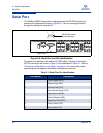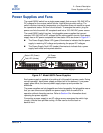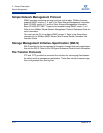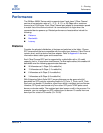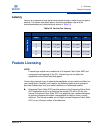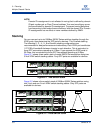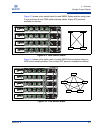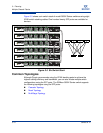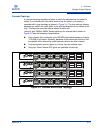
3 – Planning
Performance
3-4 59265-02 A
S
Regardless of how many credits are borrowed, extending credits requires a
minimum cable length that is dependent on transmission speed. Extending credits
over short cables can cause excessive port resets. Table 3-2 describes the
possible distances and minimum cable lengths for a port with 30 credits.
Bandwidth
Bandwidth is a measure of the volume of data that can be transmitted at a given
transmission rate. An SFP port can transmit or receive at nominal rates of 1-, 2-,
4-, or 8-Gbps depending on the device to which it is connected. This corresponds
to full duplex bandwidth values of 212 MB, 424 MB, 850 MB, and 1700 MB
respectively. XPAK ports transmit at a nominal rate of 10-Gbps which corresponds
to a full duplex bandwidth value of 2550 MB. With a 20-Gbps license key, XPAK
ports can transmit at a nominal rate of 20-Gbps (5100 MB bandwidth).
Multiple source ports can transmit to the same destination port if the destination
bandwidth is greater than or equal to the combined source bandwidth. For
example, two 2-Gbps source ports can transmit to one 4-Gbps destination port.
Similarly, one source port can feed multiple destination ports if the combined
destination bandwidth is greater than or equal to the source bandwidth.
In multiple chassis fabrics, each link between chassis contributes 424, 850, 1700,
2550, or 5100 megabytes of bandwidth between those chassis, depending on the
speed of the link. When additional bandwidth is needed between devices,
increase the number of links between the connecting switches. The switch
guarantees in-order delivery with any number of links between chassis.
Table 3-2. Extended Credit Distances and Cable Lengths
Transmission Speed Range for 30 Credits Minimum Cable Length
1-Gbps 50 Km (30÷0.6) 3 Km
2-Gbps 25 Km (30÷1.2) 1.5 Km
4-Gbps 12 Km (30÷2.4) 0.75 Km
8-Gbps 6 Km (30÷4.8) 0.37 Km



